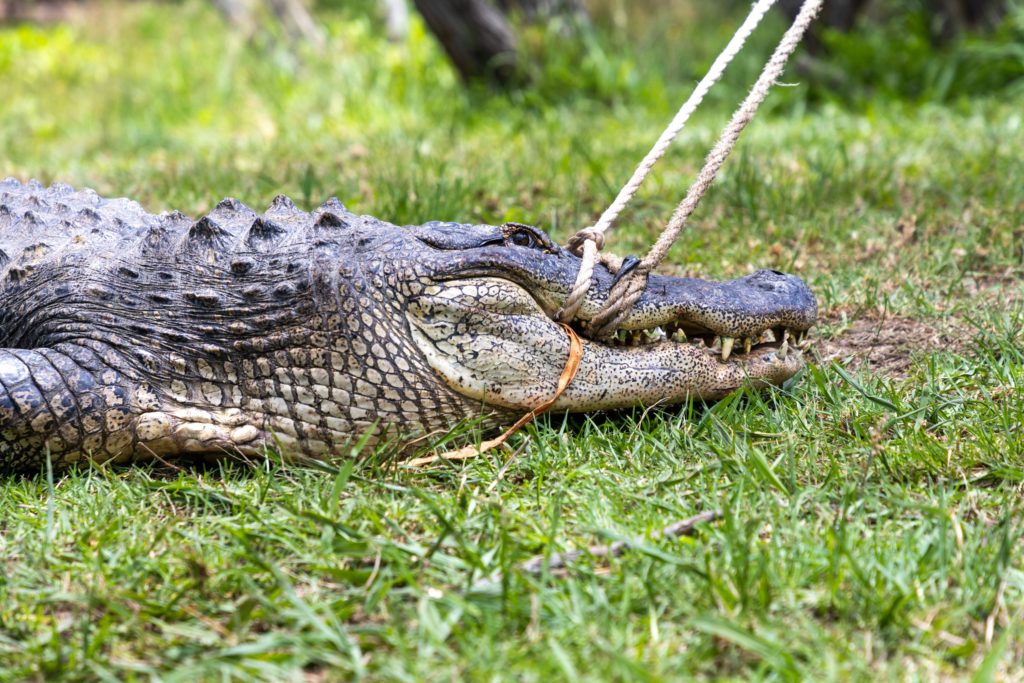In a daring rescue operation, Australian Reptile Park Operations Manager Billy Collett recently risked life and limb to save male American alligator Houdini.
After noticing that Houdini was swimming around with a foreign object in his mouth, keepers were quick to act.
Upon closer inspection, it was discovered that Houdini had nearly ingested more than a metre of sports strapping tape.
Keepers wrangled and restrained the powerful reptile, which thrashed around and performed multiple death rolls as head ropes were placed around his top jaw.
Once the ropes were secured, keepers had to tackle the daunting task of diving onto his back, carefully placing a timber chock into his mouth and taping his jaws shut.
During this process, Houdini regurgitated part of the object, revealing that it was a piece of sports strapping tape that he’d begun to ingest.
Dr Katerina Skarbek from Somersby Animal Hospital administered a small amount of sedation to make the task a little bit easier.
Collett then had to insert nearly the entire length of his arm down the reptile’s throat to safely remove the tape.

“I was absolutely shaking,” he said.
“I heard Houdini biting down on the chock and heard it cracking.
“That’s not a noise you want to hear when you’re about to put your arm down the throat of an alligator.
“I also didn’t know how far I’d need to reach down to get it and was just hoping that I’d be able to get it out in one go.”
Collett managed to dislodge the tape from behind the alligator’s palatal valve and pull the entire object out of the gator’s mouth.
“I’m so glad that the procedure went smoothly, and we were able to get the piece of tape out of Houdini’s mouth before he swallowed it,” Collett said.
“Swallowing an object like this could have cost him his life.”
The Australian Reptile Park has the largest population of American alligators living in Australia and visitors can watch them being fed during the warmer months – generally from September until April.


